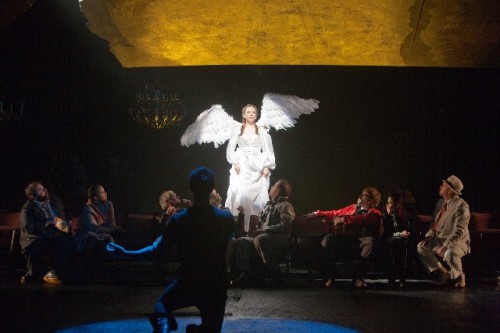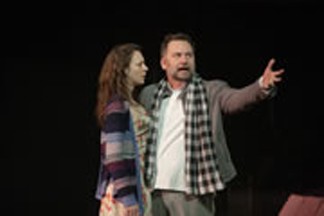The Seagull Startling At American Rep
A New Perspective on a Modern Classic
By: Mark Favermann - Jan 17, 2009
The SeagullUnrequited love and unachieved artistic ambition are two conjoined main themes of The Seagull. There are lesser themes of the questions of healing and neediness, aging and maturing, need and richness. The doctor here, Yevgeny Dorn (played by Thomas Darrah), is not interested in healing but his own comfort.
Neediness is a theme here as well but necessarily in a traditional sense, but in a layered perspective. Aging and frail Uncle Pyotr Sorin (played by Jeremy Geidt) is perhaps the most fully developed of the characters. He is needy on many levels. Though a somewhat accomplished government bureaucrat, he feels that he had a totally inadequate life. He never married or accomplished anything special. He is close and very sympathetic to his very impoverished nephew, Konstantin. His personal neediness is channeled to his physical condition. He is met by only a negative response by Dr. Dorn.
A problematic character is Boris Trigorin (played by Brian Dykstra), the acclaimed writer, lover of Irina and lover of Nina. He is bland, unexciting and rather smug. His art is one of ease, not pain. His art is one that makes him wealthy while not enriching. He is the antithesis of Konstantin. He is Konstantin's nemesis.
Besides a neediness in the uncle, there is a neediness in Masha (Ninna Kassa) who wears only black because she is so depressed. There is also neediness in Irina, Paulina Andreyevna (Cheryl D. Singleton), Nina and Ilya Shamrayev (Remo Airaldi), There is extreme neediness in Konstantin. This is a neediness of spirit, love and/or confidence. Here neediness is most particularly a poverty of love.
Water is used as a major creative device in this version of The Seagull. Water is in puddles on the floor, there is a rain sequence and there is reference to the lake. As a dream symbol. water can be interpreted in many ways. Water can mean deep emotional longing. It can mean stagnation. It can also mean what is below the surface, the unconscious. Water can also mean being out of control. Certainly, Konstantin is out of control. The bird, the seagull is also a symbol, one of ambiguity and mystery.
Veteran A.R.T. Director Janos Szasz has spun a story that is dreamlike and utterly nightmarish at times. However, dreams need interpretation. The first act, with a bit of theatrical and cinematic schtick in it, seems somewhat unclear in rhythm, storyline and even character identification. It is theatrically challenging. However, the second act makes everything much clearer. The play ultimately works well.





